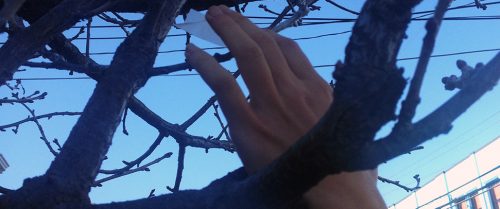Grafting

Scion: the upper part that is attached
Rootstock: the bottom part that the scion is attached to
Grafting and Budding are asexual/ vegetative means of producing trees. This means that scion that has been grafted on will be exactly like the one it originally came from. Grafting, however, also allows the new plant to take on the qualities of the rootstock. For instance, it can take on traits such as hardiness, drought tolerance, and disease resistance. Grafting requires a vast knowledge of understanding which species are compatible with the other, to ensure the most success. Usually grafting within species is the most successful means of grafting.
Grafting can benefit species through pairing scions that have adapted beneficial traits like those listed above to improve rootstock that might be more susceptible to suffering (and vice versa). Grafting can also help the reproduction of flowering trees that require the presence of other species to bloom. In this case an all female tree might have a male scion grafted in order to help increase pollination. Grafting additionally can be more successful in reproducing species that typically do not do well with vegetative cuttings (when part of the parent is cut off and planted as a means of reproduction).
The time frame for grafting it typically done in the winter or early spring while the scion and parent are still dormant. Budding however typically takes place during the species growing season.
Here is a helpful resource that includes grafting and budding techniques, as well as terms and their definitions: